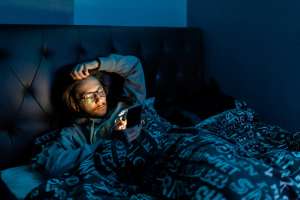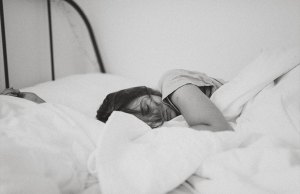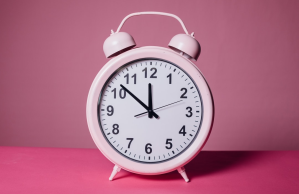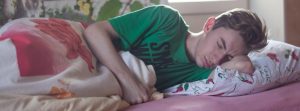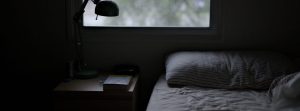Restless Legs Syndrome (RLS) is a neuromotor (nerve impulses that are transmitted to the muscles), sleep disorder that causes the individual to move his legs or arms and usually involves uncomfortable sensations that are described as creeping, tingling, itching, crawling and burning. These symptoms worsen when the person is resting. Very often, the individual will stamp his feet, shake his legs, rub his calves or get up to alleviate the discomfort. This only works for a few moments, because the sensations begin again when the person tries to rest. The individual becomes frustrated, which can disturb his sleep further.
Because the person with RLS has trouble falling asleep and may wake up from a deep sleep as a result of the symptoms, it has an effect on his quality of sleep and can cause fatigue during the day.
An estimated two to seven percent of the U.S. population has RLS. It occurs in nearly five percent of people in the nation once a week. According to the American Psychiatric Association, women are nearly two times as likely to have RLS as men.
What are the Causes of Restless Legs Syndrome DSM-5 333.94 G25.81?
While doctors don’t know what causes RLS, they believe that genes play a part. About 50 percent of the individuals with RLS have a family member with the condition. Some of the determinants that may cause RLS to worsen or to develop are:
- Chronic diseases and conditions like Parkinson’s disease, diabetes and kidney failure have the same symptoms of RLS. It is possible that treating another condition will provide relief from some of the symptoms of RLS.
- Some kinds of medicines, such as anti-nausea and antipsychotic drugs and antidepressants that contain antihistamines may cause the symptoms to worsen.
- During the last trimester of pregnancy, many women have the symptoms of RLS. Fortunately, they typically go away about one month after delivery.
What are the Symptoms of Restless Legs Syndrome DSM-5 333.94 G25.81?
According to the Diagnostic and Statistical Manual of Mental Disorders (DSM-5)*, the following are the criteria to diagnose RLS.
The individual has a strong desire to move his legs, which occurs with the response to uncomfortable and troublesome sensations in the legs, which is distinguished by each of the following.
1) The urge to move the legs:
- Starts or gets worse when resting or periods of inactivity.
- Is partly or wholly eased by movement.
- Gets worse in the evening or night than in the day. Or, it happens only during the evening or night.
2) The symptoms above happen a minimum of three times a week and have continued for a minimum of three months.
3) The symptoms are associated with extreme distress or have a negative impact on career, school, behavior and social relationships.
4) The symptoms are not because of another mental illness or medical condition and are not attributed to a behavioral condition.
5) The symptoms are not related to the effects of drugs or prescription abuse.
Is There Treatment for Restless Legs Syndrome DSM-5 333.94 G25.81?
The DSM-5 does not define treatment for RLS. However, there are a few tips that may relieve some of the symptoms.
- Some people with RLS use warm and cold packs alternately in order to ease the pain in the leg. Soaking in a warm bath can also relax the muscles in the legs. In addition, massaging the lower legs can help prior to going to bed.
- Include exercise in your daily routine. It should be moderate and only earlier in the day. Try walking for half an hour each day, as well as doing leg stretches, which are ideal for RLS.
- RLS symptoms can be triggered by stress and tension in the muscles. In order to help combat those triggers, make time for relaxation prior to bedtime. Yoga and meditation are good choices.
- Stick to a sleep routine by going to bed at the same time and waking up at the same time every day. The schedule can include doing something relaxing before bed, including soaking in a bath, reading a book or meditating. In addition, remove clocks, cell phones and any other items that may interrupt sleep.
- You may be deficient in vitamins and minerals like iron, magnesium, folic acid and vitamin B. Talk to your health professional prior to using or increasing them just in case they react with other medications you are taking.
- Some over-the-counter pain relievers and anti-inflammatory drugs may help with mild or moderate pain from RLS.
- Stay away from the things that may trigger RLS, such as not staying in one position long. Make sure to get up and walk around during the day. In addition, avoid drinks and foods that have caffeine, such as coffee, soda and chocolate.
Celebrities with Restless Legs Syndrome
People from all walks of life and every part of the world experience RLS. Some of the richest and most famous people have the condition.
- Keith Olbermann, once the talk-show host on MSNBC, was diagnosed with RLS. Although he works long hours—and probably has to schedule time for some sleep–he says that being active helps him in reducing the symptoms of RLS.
- Comedian Jon Stewart, who was a television host, also writes, produces, directs and acts. He admitted he was diagnosed with insomnia and RLS. He calls his restless legs “Jimmy Legs.”


